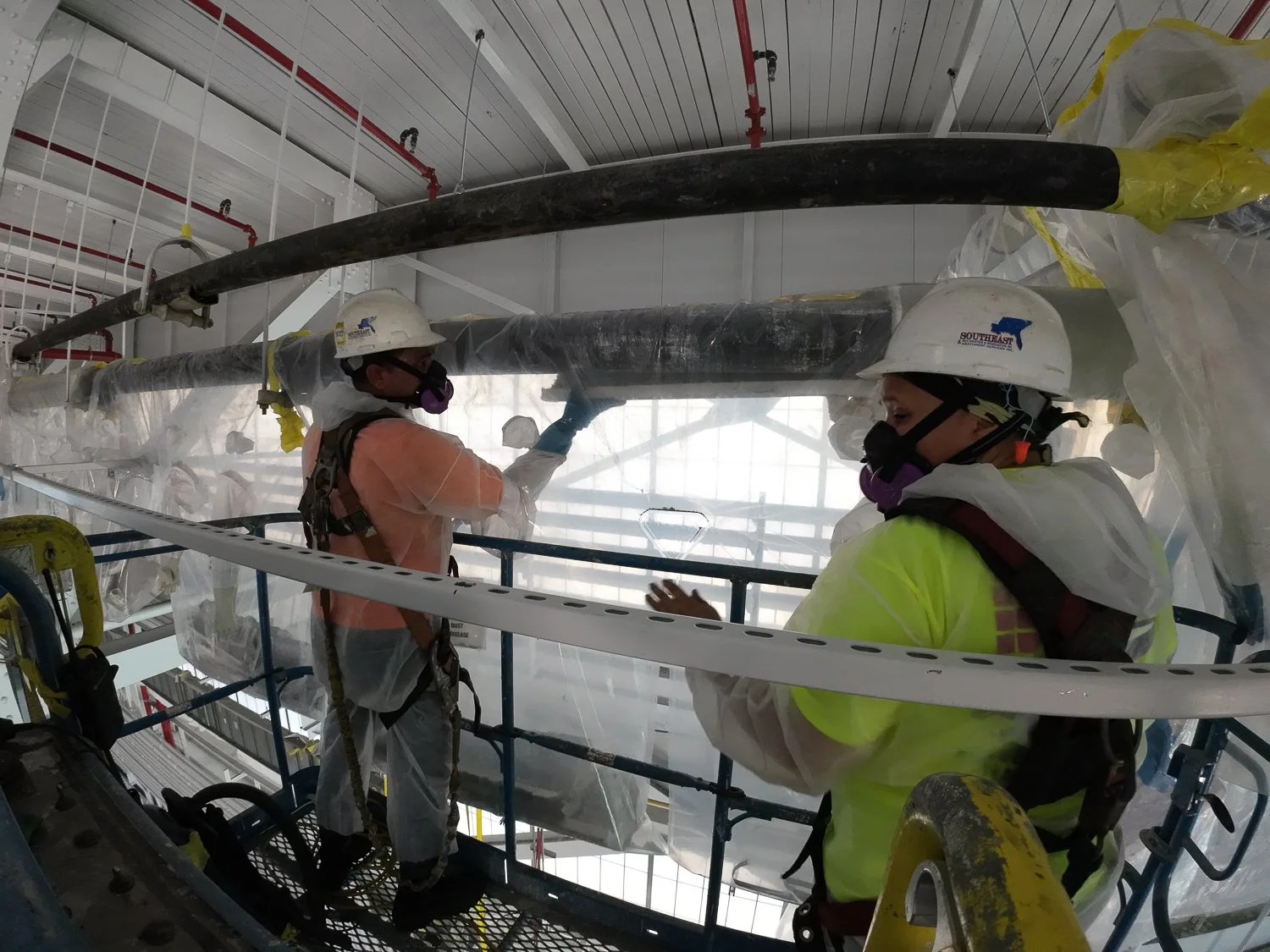Asbestos Abatement: Everything You Need to Know
Wearing personal protective equipment (PPE) workers spread a solvent to loosen up asbestos contaminated mastic (tile glue). To prevent contamination, they encase the room and use a negative air machine to create a containment field. Even though the asbestos is non-friable, every precaution is taken to ensure the safety of workers and the public.
Asbestos is a material that was commonly used in buildings and homes up until the early 1990s. However, it has since been found to cause serious health problems, and as such its use has since been banned in many countries. If your property contains asbestos, it is important to have it removed by a professional asbestos abatement company. In this article, we will discuss what asbestos is, where it is found, and how it is removed. We will also cover the health risks associated with asbestos exposure.
Asbestos is a naturally occurring mineral that is made up of thin, durable fibers. It was commonly used in insulation, flooring, and roofing materials due to its fire-resistant properties. However, when these fibers are inhaled, they can cause serious health problems including lung cancer and mesothelioma. As such, it is important to have any asbestos-containing materials removed from your property by a professional asbestos abatement company.
There are two main types of asbestos: friable and non-friable. Friable asbestos is easier to break apart and release into the air, whereas non-friable asbestos is more tightly bound and less likely to release fibers into the air. As such, friable asbestos is more dangerous and should be removed by a professional.
There are a variety of methods that can be used to test for asbestos, including bulk sampling, air monitoring, and polarized light microscopy. Bulk sampling involves removing a small sample of material from the area in question and sending it to a laboratory for analysis. Air monitoring involves setting up an air sampler near the work area and collecting samples over a specified period. Polarized light microscopy involves looking at the material under a microscope to look for the presence of asbestos fibers. While each of these methods has its advantages and disadvantages, they all provide reliable information about the presence of asbestos in a given area.
Working forty feet in the air, workers carefully remove asbestos contaminated pipe insulation along rafters. Since a traditional containment field can not be created for this type of removal, polyfilm “glove bags” are used to contain the materials. While one worker cuts and removes the insulation, the other keeps any loose airborne or friable particles from potentially escaping by keeping the material moisture-laden with water spray.
Once asbestos has been confirmed, a professional has to have the materials removed. Only trained and certified individuals have the knowledge and skills necessary to safely remove asbestos. In some cases, it may be possible to encapsulate the asbestos so that it poses no risk to human health. However, in other cases, complete removal may be the only option. The removal process typically involves wetting down the asbestos-containing materials and then removing them with special vacuums or HEPA-filtered bags. The removed materials are then disposed of in special landfill sites.


